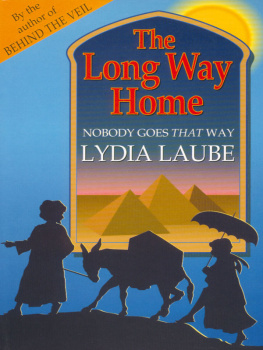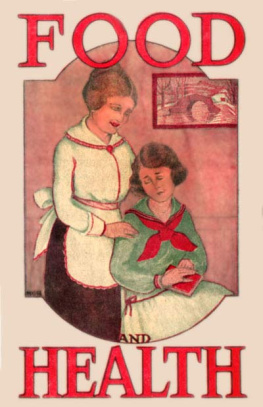

Copyright 2016 by Lydia Cacho
All rights reserved under International and Pan-American Copyright Conventions. No part of this book may be used or reproduced in any manner whatsoever without written permission from the publisher, except in the case of brief quotations embodied in critical articles and reviews.
Library of Congress Cataloging-in-Publication Data
Names: Cacho, Lydia, 1963author.
Title: Infamy: how one woman brought an international sex trafficking ring to justice / Lydia Cacho.
Other titles: Memorias de una infamia. English
Description: Berkeley, CA: Soft Skull Press, [2016] | Includes bibliographical references and index.
Identifiers: LCCN 2016008775
Subjects: LCSH: Cacho, Lydia, 1963 | Child prostitutionMexicoCancun. | Child pornographyMexicoCancn. | Women journalistsMexico.
Classification: LCC HV6570.4.M6 C33613 2016 | DDC 364.15/36dc23
LC record available at http://lccn.loc.gov/2016008775
Cover design by Kelly Winton
Interior design by Domini Dragoone
SOFT SKULL PRESS
An Imprint of Counterpoint
2560 Ninth Street, Suite 318
Berkeley, CA 94710
www.softskull.com
Distributed by Publishers Group West
10 9 8 7 6 5 4 3 2 1
e-book ISBN 978-1-61902-809-8
To my father, for his love and solidarity.
To my fellow journalists, today and always.
To hold back this looming darkness,
let us add our voices to the word,
let us make pacts of love,
truces of doubt,
let us not want for roses,
or poems,
or songs.
We must be intolerant of silence,
so that
Not one woman more
will be despoiled of April,
the wind,
and the rain.
Not One Woman More (a fragment), Guisela Lpez
Table of Contents
Guide
CONTENTS

O ne night in 1999, I was preparing to leave the offices of the magazine where I worked as editor in chief in Cancun, Mexico. My boss had gone home a short while earlier, and my secretary was waiting for me at my car. I had just activated the buildings alarm and closed the door when, on turning around, I suddenly found myself face to face with a man I thought I recognized. He pressed a gun to my forehead, and exhaling a bitter stench of tobacco as he spoke, he said that if I stuck my nose into his private life again, Id be dead. Then he turned on his heel and walked away. My blood had turned to ice. I got in the car, trying to decide how best to respond, what the most appropriate course of action would be. There was no good answer. Threatening someone with deatheven at gunpointis not a crime in Mexico. The man with the gun didnt want to kill me, he just wanted to let me know that he could. He was the owner of a brothel that masqueraded as a tropical dance club. He had a sort of bunker there where he was holding a group of young Cuban women against their will. I had published an article about it in a Cancun newspaper a few months earlier, prompting the Mexican authorities to close the club and the Cuban authoritieswho were colluding in the temporary migration of exploited dancersto cut their ties to this well-known local businessman and lawyer.
This individual considered his business-cum-criminal life a private matter, as do thousands of those who exploit women and young girls and boys all over the world. On several occasions since that night, I have faced armed men seeking to silence me with threats, violence, attempts on my life, even jail. So far none have managed to silence me. I have investigated all manner of mafias throughout my career as a journalist, writer, and defender of human rights. The deaths of esteemed colleagues have marked the passing years, and their bravery is a daily inspiration to me. I have been kidnapped, jailed, and persecuted for many years. My life is in danger today, as are the lives of the majority of those colleagues of mine who rebel against impunity and violence. My story is relevant because I am one of thousands of activists and journalists who refuse to stand silently by in the face of such atrocities as child pornography, human trafficking, the sale of weapons to hired teenage assassins, or the murder of journalists working to ensure that their societies understand the circumstances that are changing or even destroying them.
The story you hold in your hands is the biography of a complex life where love and esteem are ever-present, as are hate, extreme violence, and even death. In this book, you will find an accurate, in-depth analysis of the mafiosos who orchestrate the sale and purchase of young girls and have confessed their crimes as producers of child pornography as well as their ties to powerful politicians in Mexico, the United States, and the rest of the world. You will hear the words of those who tried to kill me for having given voice to the girls and boys who managed to escape their networks of abuse. You will learn who these small Latin American children bought and sold in Mexico are. But you will also discover the bravery of these young survivors, you will discover shared human compassion and the will to change an entire country, and you will discover how tragedy can become an instrument of social transformation.
One afternoon, I was watching the first Matrix film with a group of teenagers in the shelter I founded in Cancun for the protection of women and children. I like to use this movie when working with young people in order to discuss how we all have to make decisions and accept consequences. In the film, intelligent machines have come to enslave humans in order to exploit their vast stores of vital energy. Because it would be far too cumbersome to keep the entire human population as slaves if its individuals were aware of their situation, the machines create the Matrix, a prefabricated virtual reality within which people live, deluded as to their true condition. For the enslaved humans, the matrix they live in is an unshakable reality where happiness depends on following the rules. The character Morpheus manages to awaken the protagonist, Neo, from this virtual reality. In his confusion, Neo attempts to mount a resistance within the preexisting context, but Morpheus reminds him that he was raised in an intangible prison he can neither see, nor smell, nor touch. This prison is in the mind, and that is the genius of the Matrix. Neos task, his challenge, is to learn to understand freedom from within a different paradigm than the one he has been exposed to since he was a boy; he must transform reality and his way of looking at the world in order to free himself and others.
Reality is erected upon human experience, upon our conception of the world, and this conception is fluid: it is constantly changing and transforming. Once we understand that the cultural matrix we were brought up in is a prison backed by patriarchal powers, a prison that generates abuse, violence, and slavery, we have two choices: Those of us who seek a pattern of social interaction not based on the abuse of others, who desire freedom without violence, can unite; or we can submit to those who tell us that there is no freedom without violence. I chose the first path, and I have accepted the consequences.














